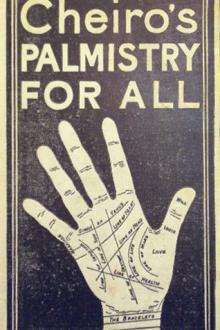The Diary - Samuel Pepys (red white and royal blue hardcover txt) 📗

- Author: Samuel Pepys
Book online «The Diary - Samuel Pepys (red white and royal blue hardcover txt) 📗». Author Samuel Pepys
Thomas Shadwell, the dramatic writer. Died 1692. ↩
She played Epicene in The Silent Woman. See Downes’s Roscius Anglicanus, 1708, p. 4. ↩
Peter Cunningham contributed to the Gentleman’s Magazine (December, 1850, p. 597) an interesting article on the letter alluded to in the text, which he supposes to have been written by Flecknoe. The title of the letter is as follows: “A Letter from a Gentleman to the Honourable Ed. Howard, Esq., occasioned by a Civiliz’d Epistle of Mr. Dryden’s before his Second Edition of his Indian Emperour. In the Savoy, printed by Thomas Newcomb, 1668.” The “Civiliz’d Epistle” was a caustic attack on Sir Robert Howard; and the Letter is signed, “Sir, your faithful and humble servant, R. F.”—i.e., Richard Flecknoe. ↩
See May 9th and 15th, and July 15th, 1668, ante. ↩
Or Butlers. See June 18th, July 24th, August 4th, 1660; June 23rd, August 11th, 1661; December 31st, 1662; March 27th, October 2nd, 1664; April 19th, 1665. ↩
Colonel Cary Dillon was the youngest son of Robert, second Earl of Roscommon, by his third wife, Anne, daughter of Sir William Stroud, of Stoake, in Somersetshire, and widow of Henry, Lord Folliott, of Ballyshannon. See August 19th, 1662 (vol. ii, p. 312). He held several posts under Charles II and James II, and upon the death, in 1684, of his nephew, the poet, he succeeded as fifth Earl of Roscommon. He married, not Frances Boteler, Pepys’s friend, but Katharine, daughter of John Werden, of Chester, and sister of Major-General Robert Werden Groom of the Bedchamber to the Duke of York, and Comptroller of his Household when king. ↩
See note 4221. ↩
Guineas took their name from the gold brought from Guinea by the African Company in 1663, who, as an encouragement to bring over gold to be coined, were permitted by their charter from Charles II to have their stamp of an elephant upon the coin. When first coined they were valued at 20s., but were worth 30s. in 1695. There were likewise five-pound pieces, like the guinea, with the inscription upon the rim. ↩
Probably Thomas Holder of the African House. ↩
At the end of the year 1666 a Dutchman of the Prince of Orange’s party, named Kiviet, came over to England with proposals for embanking the river from the Temple to the Tower with brick, and was knighted by the king. He was introduced to Evelyn, whom he persuaded to join with him in a great undertaking for the making of bricks. On March 26th, 1667, the two went in search of brick-earth, and in September articles were drawn up between them for the purpose of proceeding in the manufacture. In April, 1668, Evelyn subscribed 50,000 bricks for the building of a college for the Royal Society, in addition to £50 given previously for the same purpose. No more information on the subject is given in Evelyn’s Diary. ↩
John Sheffield, third Earl of Mulgrave, Marquis of Normanby, 1694, and Duke of Norman by and Buckinghamshire, 1703. He was succeeded, 1721, by his only son, Edmund, with whom all the honours became extinct in 1735. ↩
Their marriage, which took place soon after. ↩
William Ashburnham. ↩
Sidney Godolphin. ↩
Pietro Mocenigo, of whose entry into London, on the 17th September, 1668, an account is given in Evelyn’s Diary, and in Bp. Kennett’s Complete History, vol. iii, p. 271. A MS. copy of his relation of his embassy is in the British Museum. He was afterwards ambassador to Rome. —B. ↩
Charles Colbert. See August 8th, 1668. ↩
Count De Dona. ↩
Their benefit. ↩
See May 16th, 1668. ↩
In Piccadilly; now, after many alterations, occupied by the Royal Academy and scientific societies. The original house was probably built by Sir John Denham for Lord Burlington, from what is stated, February 20th, 1664–65, ante. ↩
Pepys’s letter to Lord Sandwich on the subject, September 29th, 1668, was published in Lord Braybrooke’s edition of the correspondence. ↩
Elizabeth, sole daughter and heir to Henry Clifford, Earl of Cumberland, wife of Richard Boyle, first Earl of Burlington. All the estates of these families came to the Cavendish family by the marriage of William, fourth Duke of Devonshire, with Lady Charlotte Boyle, heiress of Richard, last Earl of Burlington and Cork. The title of Burlington was revived for her son, Lord George Cavendish, and is now merged in the dukedom of Devonshire, the father of the present duke having held the earldom from 1834 to 1858, when he succeeded as seventh duke. ↩
The marriage with Creed. ↩
Probably the same as Mrs. Horsfield. See May 18th, 1668. ↩
A comedy by Jasper Maine, D.D. ↩
Probably Giovanni Baptista Draghi. See note 3230. ↩
See September 26th, ante. ↩
In this part of the Diary no entry occurs for thirteen days, though there are several pages left blank. During the interval Pepys went into the country, as he subsequently mentions his having been at Saxham, in Suffolk, during the king’s visit to Lord Crofts, which took place at this time (see October 23rd, post). He might also probably have gone to Impington to fetch his wife. The pages left blank were never filled up. —B.





Comments (0)